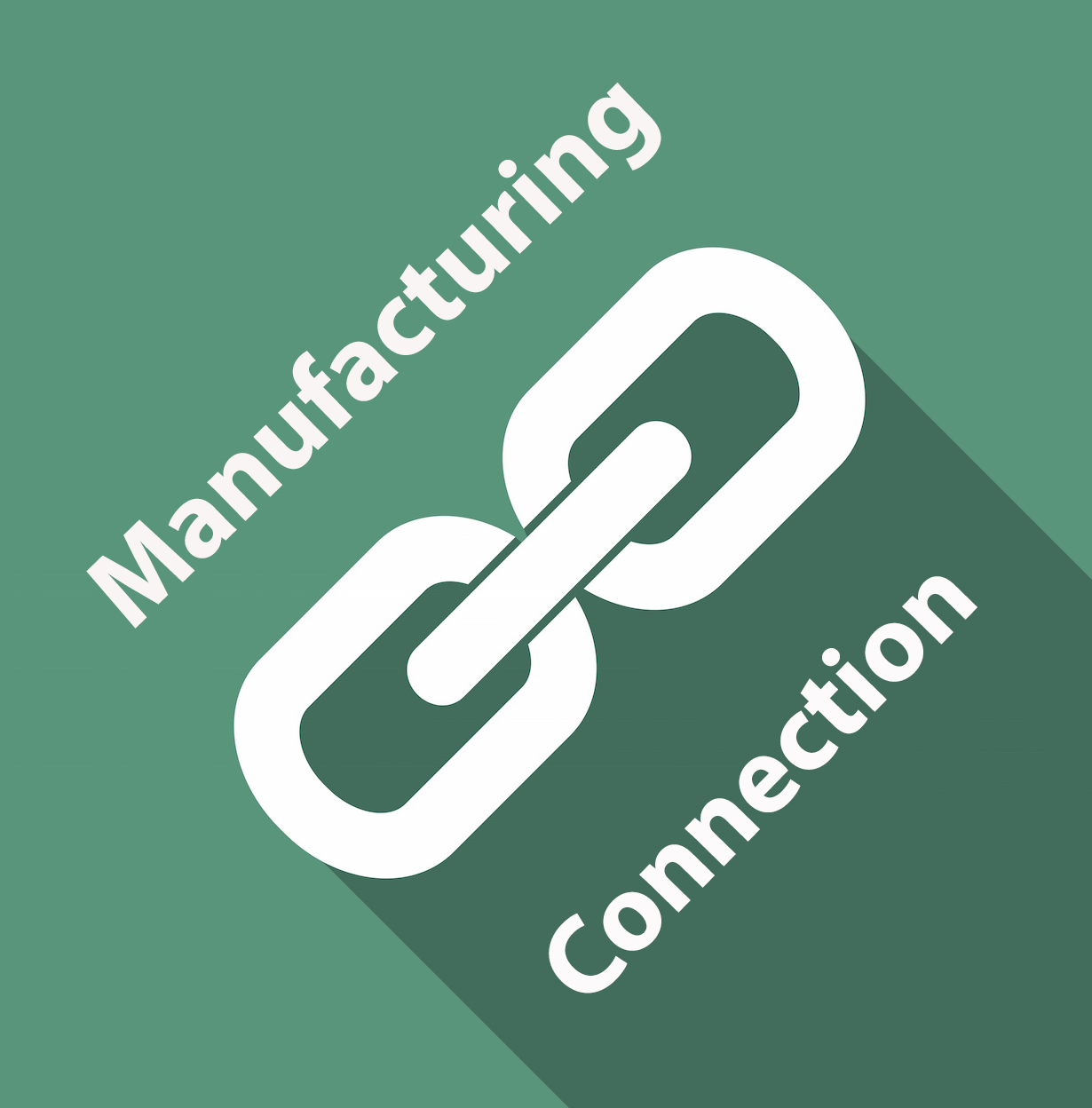
by Gary Mintchell | Apr 17, 2015 | Marketing, News
 Authentia has published a comprehensive study of the control system integrator industry’s digital marketing performance. You can find additional information on the author’s blog. Many industrial/manufacturing industries lag behind in their adoption of modern digital marketing practices, largely due to target demographics that have been slow to embrace social media and mobile computing. This has especially been the case in the control system integrator industry. However, with digital trends accelerating and workforce demographics rapidly changing, businesses are being forced to adapt quickly.
Authentia has published a comprehensive study of the control system integrator industry’s digital marketing performance. You can find additional information on the author’s blog. Many industrial/manufacturing industries lag behind in their adoption of modern digital marketing practices, largely due to target demographics that have been slow to embrace social media and mobile computing. This has especially been the case in the control system integrator industry. However, with digital trends accelerating and workforce demographics rapidly changing, businesses are being forced to adapt quickly.
[Disclaimer: I have a relationship with Authentia; I also hired it to construct a Website for Maintenance Technology magazine; Jon DiPietro built this site for me two years ago. Obviously, I like their work.]
Authentia randomly selected 100 North American control system integrators and assessed their digital marketing effectiveness against 32 separate criteria. The results indicate areas of opportunity for control system integrators to take advantage of industry-wide latencies. Owners, business developers, and marketing professionals will find this information valuable in assessing their own efforts and opportunities against their peers and competitors.
“With my background in industrial controls and leadership positions in the International Society of Automation (ISA), control system integrators are near and dear to my heart,” said Authentia Strategic Marketing Consultant Jon DiPietro. “I have many friends and colleagues who work in that industry. Over the past few years, I’ve conducted dozens of digital marketing assessments for control system integrators and other automation companies. I thought it would be interesting to conduct an industry-wide assessment and see how the industry as a whole is adapting to digital marketing trends.”
Key findings from the report include:
Websites are outdated in terms of messaging and technology:
- 79% of CSI websites we analyzed make site visits from a mobile device difficult or impossible, alienating nearly half of their web visitors.
- 48% of the website cannot easily change site content or even enable blogging, as they do not use a Content Management System (CMS).
- 45% of all sites studied make no attempt to establish trust with site visitors through the use of social proof, such as testimonials, awards, certifications, memberships, etc.
Search engine marketing is nearly non-existent in the industry:
- 3% of websites surveyed were determined to be paying for advertisements on search engines.
- 85% of CSI websites had a Domain Authority below 40, which is a measure of how much clout a website carries with search engines.
- 42% of websites did not have any analytics operating which track their performance.
The industry has not yet adopted content marketing as a strategy:
- 67% of those studied do not list or promote social media accounts, such as Facebook or LinkedIn
- 65% of websites have no blog or news feed.
- 12% had a blog and published industry-focused content (as opposed to company news).
- 88% of websites surveyed did not incorporate social sharing buttons, making their content difficult to find and share.
There are very few mechanisms in place to interact with prospects:
- 2% of websites were connected to a marketing automation tool.
- 84% of websites surveyed did not utilize visible call-to-action buttons.
- 95% of websites failed to use landing pages, which contain an offer designed to collect information from prospects.
The 2015 Control System Integrator Digital Marketing Benchmark Report can be downloaded for free at www.authentiasoft.com/2015-csi.
End Note
I just went through my list of RSS feeds for blogs and Website changes that I’ve accumulated over the past several years. No fewer than 20 of them had not been updated for two years. I could not believe the number of companies who started a very good information and content system, and then they just bailed out on it. When I think of the lost opportunities for these companies, I just shudder.

by Gary Mintchell | Mar 27, 2015 | Asset Performance Management, Automation, News, Operations Management
Reflecting trends I see in consumer-oriented platforms, Rockwell Automation has added custom-device plug-in capability to its FactoryTalk AssetCentre v6.0 asset management software. System integrators can now develop re-usable plug-ins to connect the software to unlimited third-party devices. For manufacturers, this connectivity expands monitoring, backup and recovery capabilities for their critical automation-related assets.
Just take a look at some of the latest developments from Facebook. They are telling media companies and others that the audience is there, on Facebook, so develop apps to reach that audience (owned, by the way, by Facebook).
This is not an exact analogy, but Rockwell has great market share of automation and control in North America and is competitive in Asia. Its software business, while not so dominant, is competitive. Therefore, it makes sense to offer this expansion for asset management.
FactoryTalk AssetCentre software is an asset management tool that allows manufacturers and industrial operators to centrally manage controllers and other automation-related assets. It archives asset configurations on a regularly scheduled basis, tracking changes and providing a point of return for faster recovery following an unscheduled downtime event. Archived asset configurations can also be saved and used as a “golden copy” configuration, allowing customers to pinpoint exactly what should be running in their automation layer and compare it with what is actually running.
“The FactoryTalk AssetCentre software now provides extensive access to equipment across an entire automation system,” said Mohit Singhai, product manager for Rockwell Automation. “Additionally, plug-in definitions created for one third-party device can be re-used with other devices or even in other automated industrial systems to help speed up commissioning and deployment.”
The software also archives user actions and changes. This allows operators or technicians to audit any changes that have been made to more easily identify a problem’s root cause, such as when a temporary code fix to keep a line running leads to an unanticipated downstream issue. Regular comparison reports can also inform operators of any discrepancies that might be occurring between an asset’s last saved configuration and its current parameters.
FactoryTalk AssetCentre software provides configurable levels of security. Administrators can establish role-based data access and activity limitations, and monitor individual user activities.
In addition to the new custom-device, plug-in capability included in the v6.0 software release, independent agent-group functionality has also been added. It allows users to place interrelated programs or agents into groups and then independently configure each agent group as needed, which allows for more scalable and flexible architectures.

by Gary Mintchell | Mar 23, 2015 | Marketing, News
 Authentia has published a comprehensive study of the control system integrator industry’s digital marketing performance. You can find additional information on the author’s blog. Many industrial/manufacturing industries lag behind in their adoption of modern digital marketing practices, largely due to target demographics that have been slow to embrace social media and mobile computing. This has especially been the case in the control system integrator industry. However, with digital trends accelerating and workforce demographics rapidly changing, businesses are being forced to adapt quickly.
Authentia has published a comprehensive study of the control system integrator industry’s digital marketing performance. You can find additional information on the author’s blog. Many industrial/manufacturing industries lag behind in their adoption of modern digital marketing practices, largely due to target demographics that have been slow to embrace social media and mobile computing. This has especially been the case in the control system integrator industry. However, with digital trends accelerating and workforce demographics rapidly changing, businesses are being forced to adapt quickly.
[Disclaimer: I have a relationship with Authentia; I also hired it to construct a Website for Maintenance Technology magazine; Jon DiPietro built this site for me two years ago. Obviously, I like their work.]
Authentia randomly selected 100 North American control system integrators and assessed their digital marketing effectiveness against 32 separate criteria. The results indicate areas of opportunity for control system integrators to take advantage of industry-wide latencies. Owners, business developers, and marketing professionals will find this information valuable in assessing their own efforts and opportunities against their peers and competitors.
“With my background in industrial controls and leadership positions in the International Society of Automation (ISA), control system integrators are near and dear to my heart,” said Authentia Strategic Marketing Consultant Jon DiPietro. “I have many friends and colleagues who work in that industry. Over the past few years, I’ve conducted dozens of digital marketing assessments for control system integrators and other automation companies. I thought it would be interesting to conduct an industry-wide assessment and see how the industry as a whole is adapting to digital marketing trends.”
Key findings from the report include:
Websites are outdated in terms of messaging and technology:
- 79% of CSI websites we analyzed make site visits from a mobile device difficult or impossible, alienating nearly half of their web visitors.
- 48% of the website cannot easily change site content or even enable blogging, as they do not use a Content Management System (CMS).
- 45% of all sites studied make no attempt to establish trust with site visitors through the use of social proof, such as testimonials, awards, certifications, memberships, etc.
Search engine marketing is nearly non-existent in the industry:
- 3% of websites surveyed were determined to be paying for advertisements on search engines.
- 85% of CSI websites had a Domain Authority below 40, which is a measure of how much clout a website carries with search engines.
- 42% of websites did not have any analytics operating which track their performance.
The industry has not yet adopted content marketing as a strategy:
- 67% of those studied do not list or promote social media accounts, such as Facebook or LinkedIn
- 65% of websites have no blog or news feed.
- 12% had a blog and published industry-focused content (as opposed to company news).
- 88% of websites surveyed did not incorporate social sharing buttons, making their content difficult to find and share.
There are very few mechanisms in place to interact with prospects:
- 2% of websites were connected to a marketing automation tool.
- 84% of websites surveyed did not utilize visible call-to-action buttons.
- 95% of websites failed to use landing pages, which contain an offer designed to collect information from prospects.
The 2015 Control System Integrator Digital Marketing Benchmark Report can be downloaded for free at www.authentiasoft.com/2015-csi.
End Note
I just went through my list of RSS feeds for blogs and Website changes that I’ve accumulated over the past several years. No fewer than 20 of them had not been updated for two years. I could not believe the number of companies who started a very good information and content system, and then they just bailed out on it. When I think of the lost opportunities for these companies, I just shudder.

by Gary Mintchell | Jan 30, 2015 | Automation, News
 Control system integrators and industry suppliers from around the globe will gather in Washington, D.C., U.S., April 29 – May 2 for the CSIA 2015 Executive Conference. This is a conference I’ve never been able to work into my schedule, but reports from many people testify that this is a worthwhile conference. I know that the association has been working hard to promote integrators and to boost their skills.
Control system integrators and industry suppliers from around the globe will gather in Washington, D.C., U.S., April 29 – May 2 for the CSIA 2015 Executive Conference. This is a conference I’ve never been able to work into my schedule, but reports from many people testify that this is a worthwhile conference. I know that the association has been working hard to promote integrators and to boost their skills.
Economist Alan Beaulieu, president of ITR Economics, will open the conference with his latest economic outlook for manufacturing. This year, Beaulieu will be joined on the stage by Nick Setchell, CEO of Practice Strategies, for a “stump the experts” session, during which attendees can ask the speakers questions on external and internal financial influences on their business. Their presentations will be the first of more than 20 educational sessions offered throughout the three-day event.
New this year are two workshops that will be held in conjunction with the conference. The Best Practices Training workshop will be offered Tuesday, April 28 – Wednesday, April 29, for those who are interested in learning more about the application of CSIA’s best practices to improve their system integration businesses. The training will focus on the management areas that are most challenging for growing integration companies.
A second workshop created for project managers, control engineers and designers will be held concurrently with the Executive Conference. A Commonsense Approach to Automation Upgrades and System Migrations will be offered Thursday, April 30 – Friday, May 1. Workshop participants are invited to participate in all conference social events.
Those attending the conference will have multiple opportunities for networking, including an industry expo, awards banquet and a closing reception during which Executive Director Bob Lowe will be honored. Lowe is retiring in June.
Last year, a record-breaking 538 people attended the conference, including more than 80 system integrators, partners and guests from outside the United States. See the complete details and register at the CSIA 2015 Executive Conference website.

by Gary Mintchell | Jan 21, 2015 | Manufacturing IT, Operations Management, Software
 Tim Sowell, Schneider Electric Fellow and Vice President, is always thinking two or three steps ahead of the rest of us. His weekly blog is on my must-read list. This week he tackles the future role of systems integrators—assuming that manufacturing software becomes much more configurable out of the box (therefore requiring much less custom code).
Tim Sowell, Schneider Electric Fellow and Vice President, is always thinking two or three steps ahead of the rest of us. His weekly blog is on my must-read list. This week he tackles the future role of systems integrators—assuming that manufacturing software becomes much more configurable out of the box (therefore requiring much less custom code).
“In a number of discussions this week and last year it was clear that in the next 5 to 10 years the role and way traditional System Integrators work in the Industry Supervisory/ Operational/ Information space, will transform significantly. Especially those serving the smaller to medium industrial market, customers will demand accelerated solutions with a different model of project management, e.g., no RFP, no long project cycle, expect pre canned domain knowledge. They will want setup fast, and results with understandable costs. Similar to Sales Force.com where your CRM system can be set up in days, is the model that early adopters are testing in 2014, and I expect to grow in 2015.”
I tweeted this out Sunday and wound up in an interesting Twitter conversation with Andy Robinson (@archestranaut). A couple of other people chimed in. More on that below.
No offense meant to the sales function, but manufacturing operations software is of necessity much more complex. Sowell implies that there is some beta or alpha testing going on, but it will be interesting to see how that develops. One of the biggest challenges is for the customer to rationalize and understand its operations such that a configurable solution will be feasible.
Sowell continues:
“So what is changing is that users are now wanting:
- Solutions faster, minimal project removal of the project RFP process
- Less involvement
- Expect domain experience built in
- Minimal impact on internal resources
- Minimal risk
- “Good enough” will do if it improves and minimal impact or up front cost
- Minimal up front cost.
“So the new generation of System Integrator in the industrial world will be a “solution provider”. Providing a service of domain solutions hosted and built on an digital industrial platform from vendors such as Schneider-Electric. They will engage the customer in 3 to 5 year service contracts, but projects will be in weeks not months, years, RFPs will go away to selecting modules and completing configuration questionnaires.”
This begins another crucial thought process for systems integrators. I remember the height of the open systems movement from the late 90s through the early 2000s. SIs wondered if open systems would put them out of business. No more custom coding proprietary systems.
I suggested that open systems would require even more work from SIs, because someone would have to tie the parts together. In many ways, I don’t think open systems were as revolutionary as we thought they would be. However, the thought process did yield a number of standard interconnect technologies.
Now onward to operations management software. My next post after this one, as fate would have it, concerns just such a configurable system as Sowell envisions. In that case, much of the work can be done without systems integrators. The process is designed for small-to-medium-sized businesses presently, but it will be interesting to see how far the concept can be stretched.
Here is a glimpse of the twitter conversation I had with Andy Robinson:
@garymintchell – Controversial to system integrator community? “System Integrators Transformation to Solution Providers” http://invensyssysevolution.blogspot.com/2015/01/traditional-system-integrators.html …
@archestranaut – it will take a massive shift in thinking for customers but must start with the software platforms first
@archestranaut – yes bc the current solutions aren’t even close to good enough to just point click configure.
@archestranaut – also until customers are ready to accept 95% out of the box functions ala salesforce or google docs we aren’t there
@garymintchell – yes. How about need to rationalize processes before adding software? You can’t just slap software at a problem?
@archestranaut – agreed. We are light years from even the WordPress model where out of the box gets you 80% +19% with 3rd party themes
@archestranaut – but then again Tim thinks way out beyond what average folks are thinking.

 Authentia has published a comprehensive study of the control system integrator industry’s digital marketing performance. You can find additional information on the author’s blog. Many industrial/manufacturing industries lag behind in their adoption of modern digital marketing practices, largely due to target demographics that have been slow to embrace social media and mobile computing. This has especially been the case in the control system integrator industry. However, with digital trends accelerating and workforce demographics rapidly changing, businesses are being forced to adapt quickly.
Authentia has published a comprehensive study of the control system integrator industry’s digital marketing performance. You can find additional information on the author’s blog. Many industrial/manufacturing industries lag behind in their adoption of modern digital marketing practices, largely due to target demographics that have been slow to embrace social media and mobile computing. This has especially been the case in the control system integrator industry. However, with digital trends accelerating and workforce demographics rapidly changing, businesses are being forced to adapt quickly.









